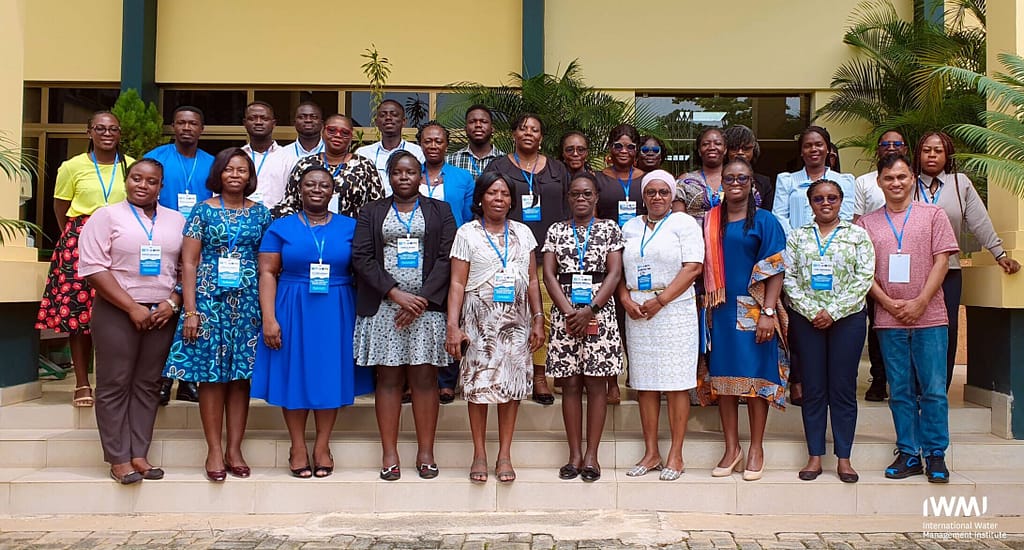
Climate change is a pressing global issue, with profound impacts on countries that are largely dependent on natural resources for economic growth. In Ghana, many communities rely heavily on rain-fed agriculture and natural resources such as non-timber forest products for their livelihoods. These communities are increasingly faced with unpredictable rainfall patterns posing a constant threat to their livelihoods, particularly for the most climate-vulnerable persons. Climate change impacts different social groups differently, and their adaptation strategies also differ significantly. However, these differences in climate vulnerability are usually overlooked in the formulation and implementation of interventions for communities.
The situation creates gaps and mismatches between the needs of specific social groups and climate interventions proposed by the government, highlighting the urgency of inclusive decision-making approaches that effectively consider the differences in climate vulnerability. This blog explores the relevance of granular gender and climate vulnerability hotspot mapping as a decision support tool by reflecting on its application based on case studies from other African contexts. It also outlines ongoing engagements with national-level stakeholders to develop a similar tool in Ghana. This tool will support the identification of vulnerable areas to inform policymakers about the specific needs of diverse social groups.
The importance of inclusive climate action
The effects of climate change are disproportionately severe for women, youth, and people with disabilities (PWDs), particularly those engaged in agriculture, water, energy, and health sectors. Generally, these groups of people are more vulnerable to climate-related risks due to a combination of social, economic, and environmental factors. Evidence from a research study conducted by the International Water Management Institute (IWMI) in the Upper West Region of Ghana identified several key constraints affecting women and youth in agriculture and related sectors. Women, who mainly depend on agriculture livelihoods in these areas, often encounter barriers such as less participation in decision-making processes, limited access to land, financial credit, and other agricultural inputs. For instance, traditional land ownership norms typically favor men, restricting women’s ability to secure the land needed for farming. Similarly, water scarcity disproportionately affects women, who bear the burden of water collection for domestic use, forcing them to travel longer distances during droughts, often at the expense of their education and economic activities. This limitation also hampers their ability to adopt climate-resilient practices and technologies, thereby worsening their vulnerability to climatic risks.
The role of gender hotspot mapping in inclusive climate action
To effectively address these challenges, transformative approaches are required. These approaches must enhance the capabilities of women and other marginalized groups, boost their productivity, and increase their adaptive capacity to climate change in Ghana. One proven method is gender and climate vulnerability hotspot mapping, an initiative successfully implemented by the African Group of Negotiators Experts Support (AGNES) in Botswana, Kenya and Uganda.
In Kenya, for example, the hotspot maps have enabled stakeholders to identify priority areas for financing, designing, implementing, and monitoring gender-responsive adaptation and resilience policies, strategies, programs, and projects. Additionally, these maps help decision-makers to identify climate risks at the sub-national level. For instance, they reveal sub-national variations in climate change adaptation needs, women’s participation, and adaptive capacity across all of Kenya’s counties.
Granular gender and climate vulnerability hotspot maps
In collaboration with AGNES, IWMI recently organized a training workshop for technical experts from ministries and departments related to agriculture, water, energy, environment, and gender. The experts identified key indicators and their sources to estimate the extent of exposure, sensitivity, and adaptive capacity within the context of a vulnerability assessment framework. Currently, data is being compiled and analyzed across the agriculture, water, and energy sectors, encompassing all 261 districts in Ghana. This sex-disaggregated data will guide the implementation of gender-responsive measures tailored to diverse population groups. The process involves understanding the intersectionality between climate change vulnerability and gender across these three critical economic sectors. By mapping climate vulnerabilities, the initiative aims to support effective climate resilience development and generate insights for gender-transformative climate action, particularly in hotspot locations such as northern Ghana.
The hotspot maps are increasingly becoming essential tools for development planning, as they highlight the most vulnerable areas and the groups most at risk, such as resource-poor farmers, women, and girls. By pinpointing these areas, the maps help ensure that interventions reach those who need them most. The Ministry of Gender, Children, and Social Protection, which is revising its National Gender Policy to better integrate gender into the national development process, recognizes the value of these maps in achieving its goals, including the empowerment and livelihood enhancement of women. To ensure the sustainability of these efforts, continuous stakeholder engagement, ongoing capacity building, and the integration of gender-sensitive approaches into national climate policies are essential. These measures will not only address the unique vulnerabilities of Ghana’s population but also contribute to a more resilient and equitable future.

